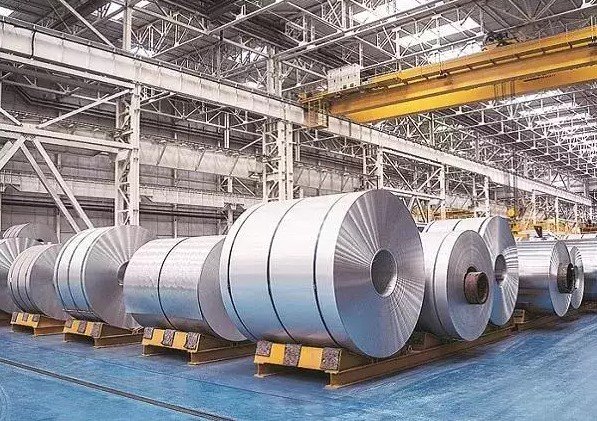New Delhi, 18/08/2025: India has decided to impose safeguard duties on imported steel for the next three years. The move is aimed at protecting local steel producers from a sharp rise in cheaper imports, mainly from China. However, experts warn that this decision could hurt important industries such as automobiles, engineering, and construction, which depend on steel as a key input.
The Directorate General of Trade Remedies (DGTR) has recommended a safeguard duty of 12 percent in the first year, 11.5 percent in the second year, and 11 percent in the third year. The recommendation follows an investigation that found a surge in imports between October 2023 and September 2024, which officials said caused “serious injury” to Indian producers. A provisional duty of 12 percent had already been in place since April 2025.
Indian steelmakers have welcomed the decision. They argue that cheap imports were flooding the market, reducing their profits, and threatening their long-term survival. The financial markets also reacted positively, with shares of major steel companies such as Tata Steel, JSW Steel, and SAIL rising by up to three percent after the announcement. Investors see the safeguard duty as a measure that will help domestic producers maintain healthy margins.
But many companies that rely on steel are unhappy. More than 250 firms and industry associations have opposed the duty. This includes automakers such as Tata Motors, Maruti Suzuki, Hyundai, and Toyota Kirloskar, as well as electronics companies like Samsung, LG, Whirlpool, and ABB. These businesses argue that higher duties will raise their costs, reduce export competitiveness, and make it harder to source the specialized grades of steel that are not produced in India.
The Global Trade Research Initiative (GTRI), a policy think tank, has strongly criticized the decision. It notes that India is still a net importer of steel, with consumption in 2024-25 at around 137.8 million tonnes compared to domestic production of 132.9 million tonnes. This means the country already needs imports to fill the gap. GTRI also points out that major Indian steelmakers are still profitable, with Tata Steel recording an EBITDA margin of 21 percent and SAIL at 11.6 percent. According to the think tank, the safeguard duty mainly helps a few large steel producers while putting pressure on hundreds of downstream manufacturers that employ far more workers.
Another concern is availability. Many industries fear that the duty will create shortages of specialty steel grades that are not manufactured locally. This could disrupt production in cars, electrical equipment, and infrastructure projects, slowing down overall growth.
India’s decision is also part of a wider global trend of rising trade protectionism. Earlier this year, the government even considered doubling safeguard duties on Chinese steel from 12 percent to 24 percent. While the new measure is meant to give breathing space to Indian steelmakers, it risks making finished goods more expensive and less competitive in international markets.
The safeguard duty reflects a difficult balancing act. Protecting steelmakers may secure jobs in that sector, but higher steel costs could slow down industries that are central to India’s growth story. The challenge for policymakers will be to ensure that protecting one industry does not end up hurting many others.


